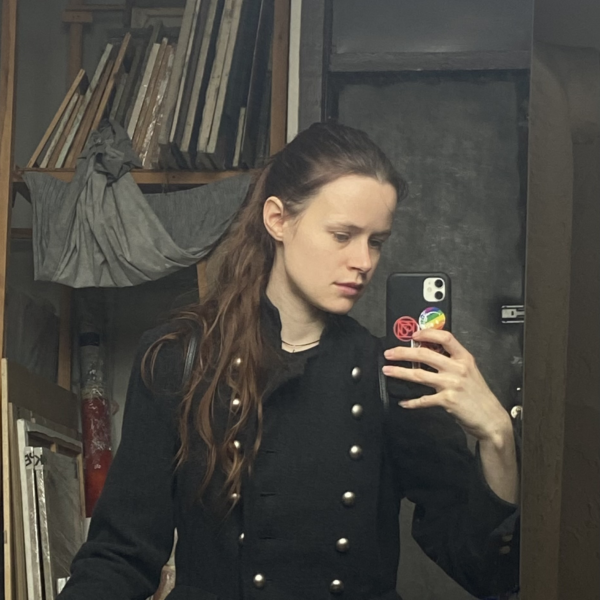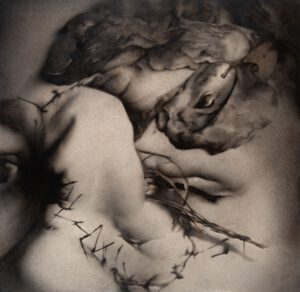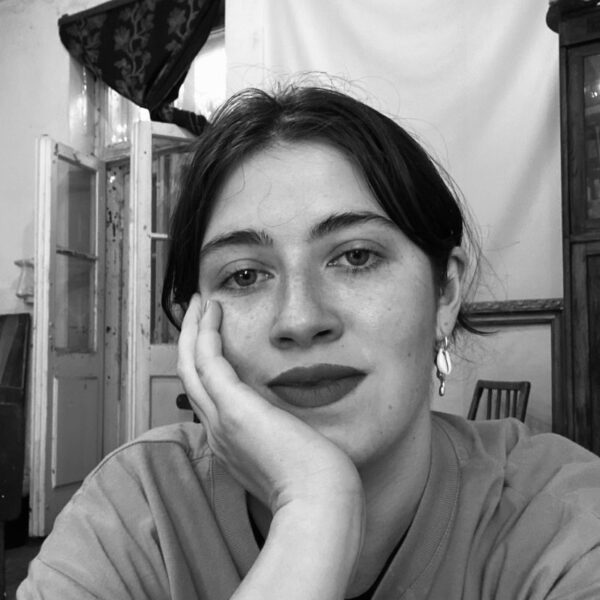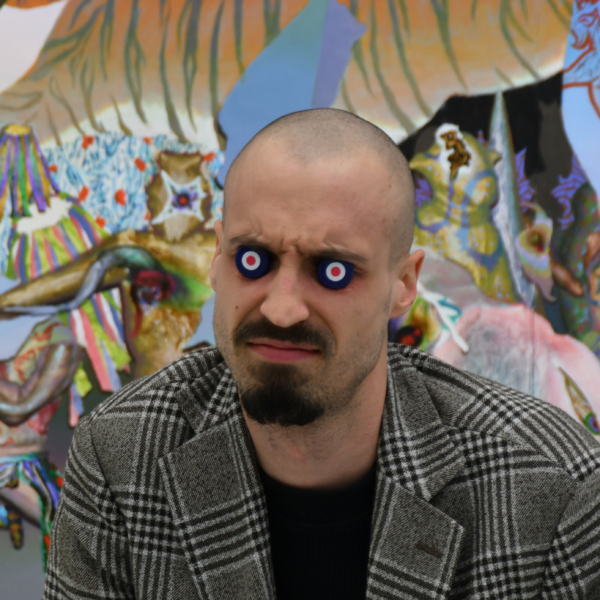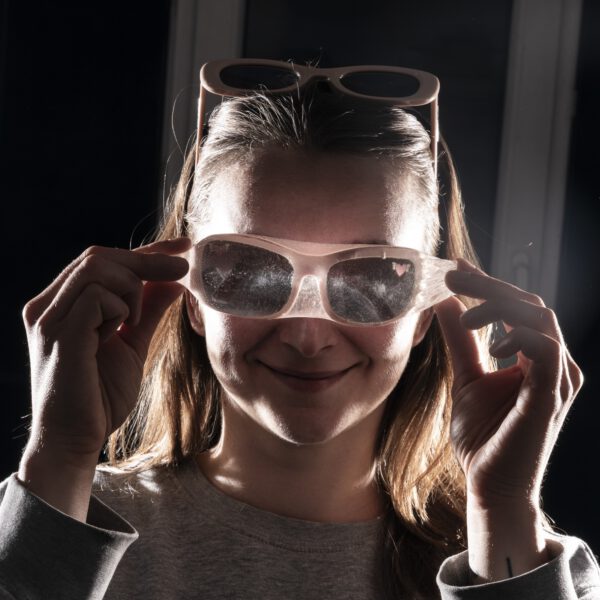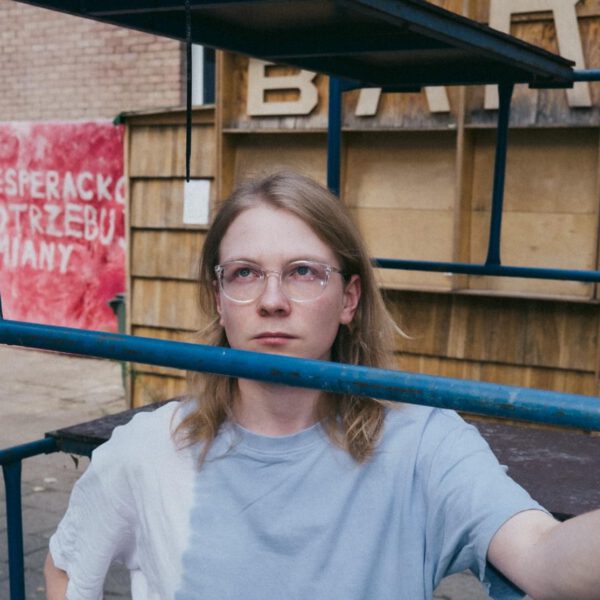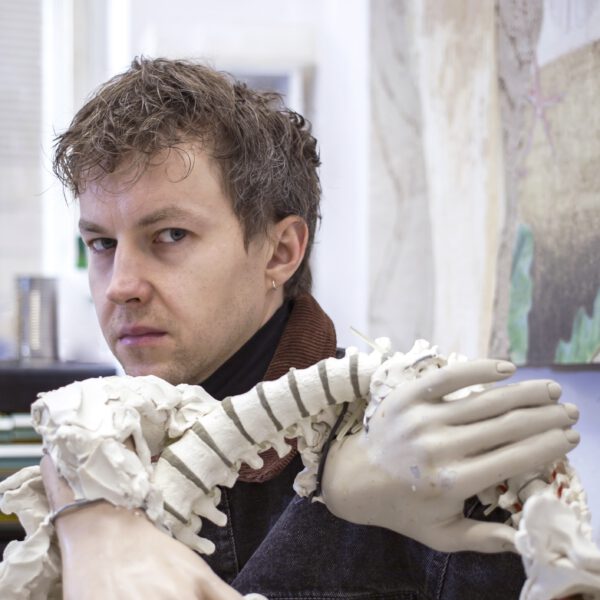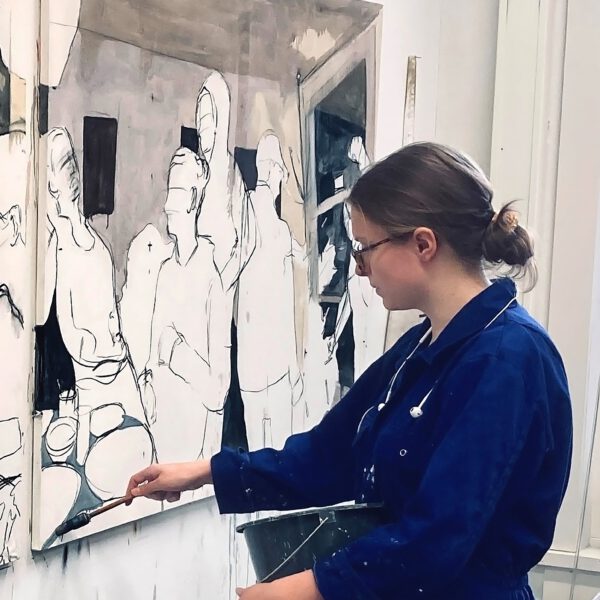Krystyna Melnyk (1993) is a Ukrainian artist based in Kyiv. Her figurative paintings on canvas and board use the traditional technique of gesso and levkas, derived from the art of icon painting. Her work is strongly influenced by Goerge Bataille’s work, particularly his exploration of the sacred through the image of the suffering body, which the artist employs in search for new spirituality.
The image of a hurt body, which the artist treats with tenderness, is central to her practice. As the artist comments: I work with pain. This image is both ecstatic and unbearable. The monster phenomenon attracts and reveals the decomposition of anthropomorphism. We can see this when we observe the shocking image. It has religious or erotic experiences that are constantly approaching the experience of death, pain.
Altar: part IV refers to the two states of a body: healthy and sick. Melnyk’s dialogue is always with the sick body and pain has become a form of her language. In my experience, she notes, it is not just empathy that matters but rather reverence for the image of the suffering body. The work is inspired by Matthias Grünewald’s Isenheim Altarpiece, commissioned by the Order of Antonine Monks, devoted to the care and treatment of the sick.
Speaking about “Seen by God” or “Calling for Mercy” the artist quotes Bataille’s The History of Eroticism: “In theory, the sexual organs have nothing to do with the disintegration of the flesh: indeed, their function places them at the opposite pole. Yet, the look of the exposed inner mucosae makes one think of wounds about to suppurate, which manifest the connection between the life of the body and the decomposition of the corpse.”
A Body That Wants to be a Landscape is a piece created very shortly before the full scale invasion of Russia against Ukraine. It presents the body of a fallen warrior that grows together with the ground.
- Seen by god
Krystyna Melnyk (ur. 1993) – ukraińska artystka mieszkająca w Kijowie. Jej figuratywne obrazy na płótnie i desce wykorzystują techniki wywodzące się ze sztuki malowania ikon, m.in. gruntowanie kredą czy stosowanie specjalnych naturalnych mieszanek przed nakładaniem złoceń. Twórczość Melnyk jest mocno inspirowana tekstami George’a Bataille’a, zwłaszcza tymi poświęconymi badaniom sfery sacrum poprzez obraz cierpiącego lub zranionego ciała.
Artystka przygląda się cierpieniu i bólowi z czułością, jako drodze do nowej duchowości. Sama wyraża to następująco: „Pracuję z bólem. Obraz może jednocześnie powodować ekstazę i być nie do zniesienia, jak potwór, który przyciąga i ujawnia rozkład antropomorfizmu. To właśnie widzimy, gdy patrzymy na szokujący obraz. Może wywoływać religijne lub erotyczne doświadczenia, które coraz bardziej zbliżają się do doświadczenia śmierci czy bólu”.
Ołtarz: Część IV odnosi się do dwóch stanów ciała: zdrowia i choroby. Melnyk zawsze wchodzi w dialog z tym drugim, a jej językiem jest ból. Wyjaśnia to następująco: „W moim doświadczeniu liczy się nie tylko empatia, ale także szacunek dla obrazu cierpiącego ciała”. Inspiracją dla pracy był ołtarz Matthiasa Grünewalda z Isenheim, zamówiony przez Zakon Świętego Antoniego, poświęcony opiece i leczeniu chorych.
Mówiąc o pracy Widziany przez Boga lub wołający o litość, artystka cytuje Historię erotyzmu Bataille’a: „Narządy płciowe są w zasadzie obce cielesnemu rozkładowi, owszem, ich funkcja umieszcza je na biegunie dokładnie przeciwnym. A jednak obnażone wewnętrzne błony śluzowe przypominają rany skazane na ropienie i ustanawiające łączność między żywym ciałem a rozkładającym się trupem”.
Ciało, które chce być krajobrazem to praca stworzona na krótko przed inwazją Rosji na Ukrainę. Przedstawia ciało poległego wojownika, które zrasta się z ziemią.
- Seen by god







